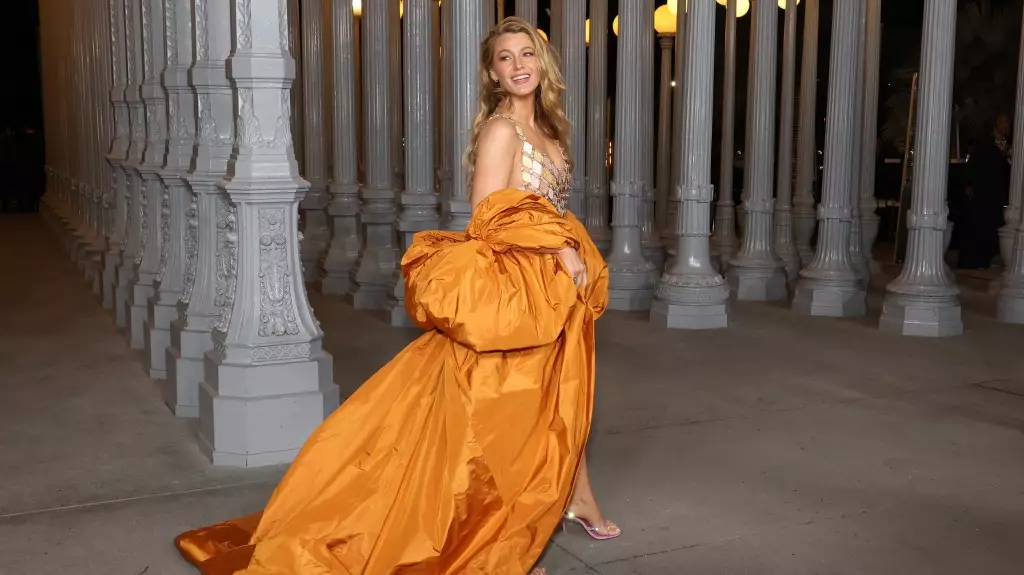The entertainment industry often harbors stories of triumph, but behind the glitz and glamor, serious issues including harassment persist, threatening careers and reputations. The recent lawsuit spearheaded by Blake Lively against her co-star and director Justin Baldoni not only raises questions about on-set behavior but also highlights the far-reaching consequences of alleged misconduct in Hollywood. In this article, we will dissect the implications of this unfolding case and its profound impact on the individuals involved and the industry at large.
Blake Lively’s allegations against Justin Baldoni encompass serious claims of sexual harassment and a calculated retaliatory smear campaign. According to Lively, the fallout from these alleged actions forced her to cancel significant public engagements, including a high-profile debut as the host of Saturday Night Live’s 50th season premiere. The lawsuit documents these consequences in stark terms, revealing that the negative buzz surrounding the film’s production left her feeling unable to participate in public events without addressing the misconduct that occurred on set.
The chain of events following the allegations underscores how quickly a professional landscape can shift, particularly for women who speak out about harassment. The legal documentation reflects the immediate impact on Lively’s career, illustrating a heightened risk of potential backlash when challenging the normative behaviors prevalent in the entertainment ecosystem.
Amidst the legal texts, a vivid narrative unfolds about the working conditions during the filming of “It Ends With Us,” the cinematic adaptation of Colleen Hoover’s novel. Descriptions of Baldoni’s behavior—including the introduction of unsuitable improvised scenes and inappropriate discussions about personal matters—paint a troubling picture. Such invocations not only suggest a lack of professionalism but also an alarming disregard for the comfort and autonomy of fellow cast members.
Lively’s allegations indicate a larger issue prevalent in many workplaces: the struggle against an environment where individuals feel they must endure discomfort to maintain their careers. The lawsuit identifies a crucial moment when the production team met to confront Baldoni about his actions, revealing attempts to maintain a semblance of normality in a situation that was anything but. This behavior unveils the underlying question of power dynamics at play, where the abuser often operates with a sense of impunity.
Following the filing of the lawsuit, the industry response has been swift, with Baldoni losing representation at WME, the agency that previously supported him. This reflects a pivot within the industry to take allegations seriously and respond to public sentiment regarding accountability. The backing Lively received from her peers and author Colleen Hoover illustrates a supportive network forming around those who speak up against mistreatment.
However, it’s essential to recognize that while individual support can be overwhelming, the road to justice and resolution is complex and fraught with challenges. Each allegation initiates a process that can expose individuals to public scrutiny, which often engenders a range of opinions and discourses that can be damaging to all actors involved, even those who are innocent.
This lawsuit not only spotlights individual situations but also invokes larger conversations about workplace misconduct across various industries. The power indeed lies with those privileged enough to speak out, yet it raises the question of what happens to those who cannot. The reaction to Lively’s claims might inform future dialogues around workplace environment safety and the widespread need for systemic changes in how allegations of misconduct are processed and believed.
The culture of silence surrounding workplace harassment must be dismantled to foster environments where individuals can advocate for themselves without fear of retaliation. The scrutiny and public discourse surrounding this lawsuit exemplify the necessity of continued awareness around these issues, promoting a critical examination of bad behavior in every facet of society.
As this case unfolds, it serves as a pivotal moment for the industry. The protagonists in this drama—Blake Lively and Justin Baldoni—represent more than just single entities; they embody the evolving dynamics of accountability in entertainment. The future of this lawsuit could set a precedent on how similar cases are addressed, shaping the cultural narrative regarding harassment and retaliation.
For Lively, it may redefine her path moving forward, just as it reflects the broader movement empowering individuals to voice their concerns and demand respect in their professional environments. As audiences, advocates, and industry insiders observe how these unfolding events play out, we bear witness to the potential transformation that could result from this pivotal moment in Hollywood’s ongoing fight against harassment.


Leave a Reply